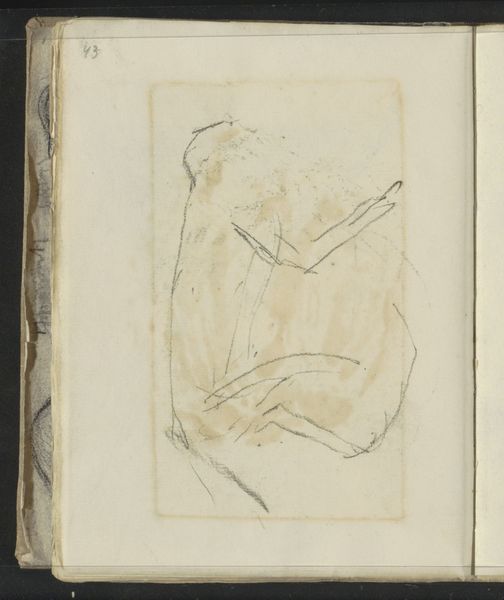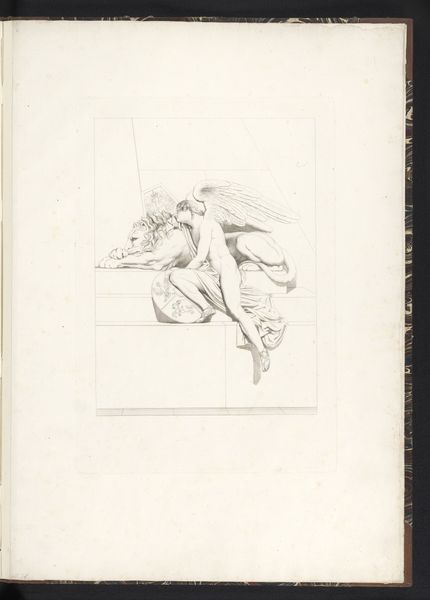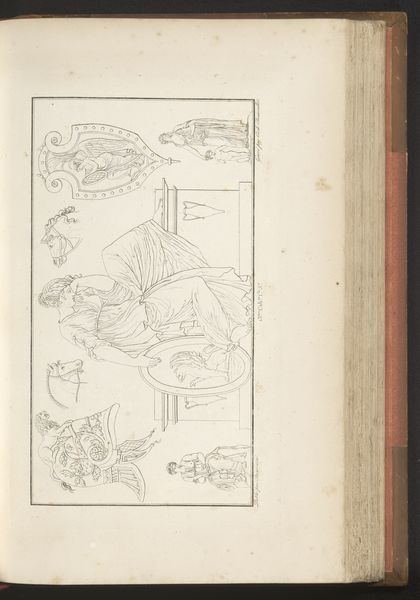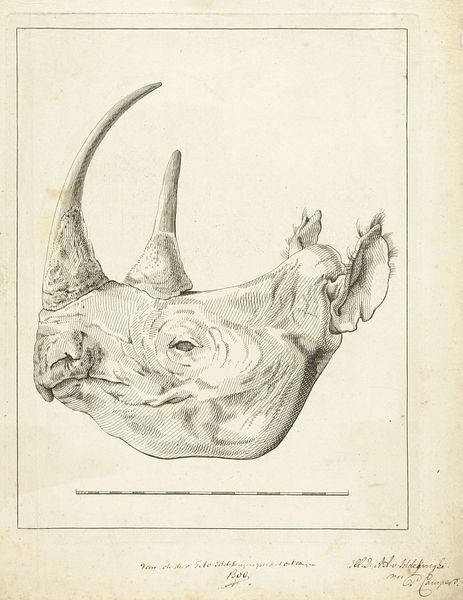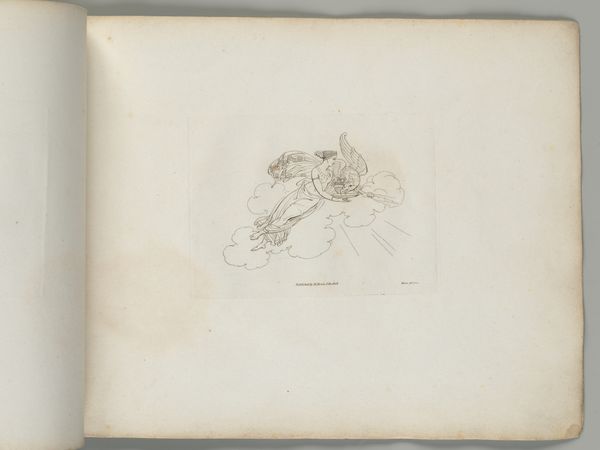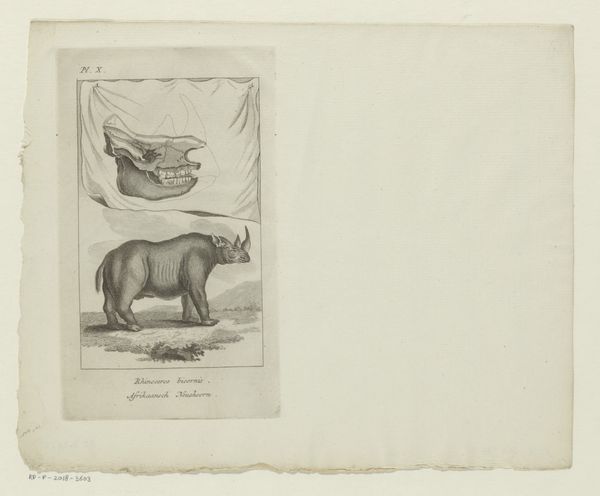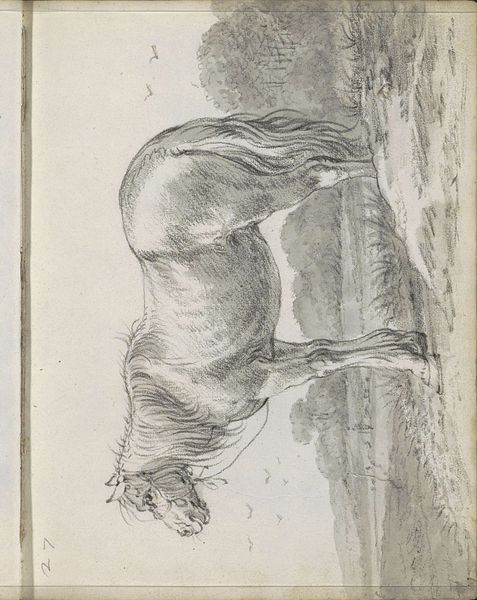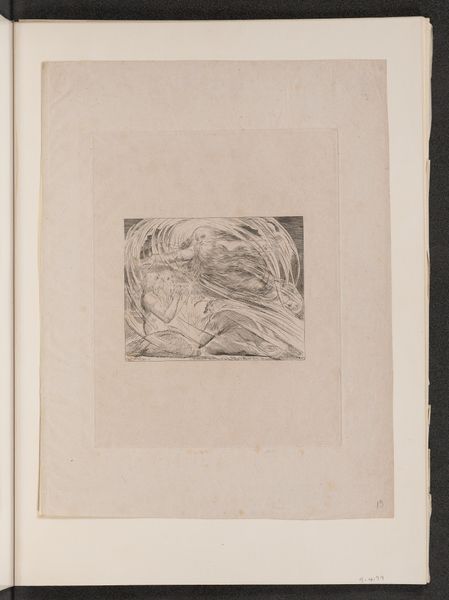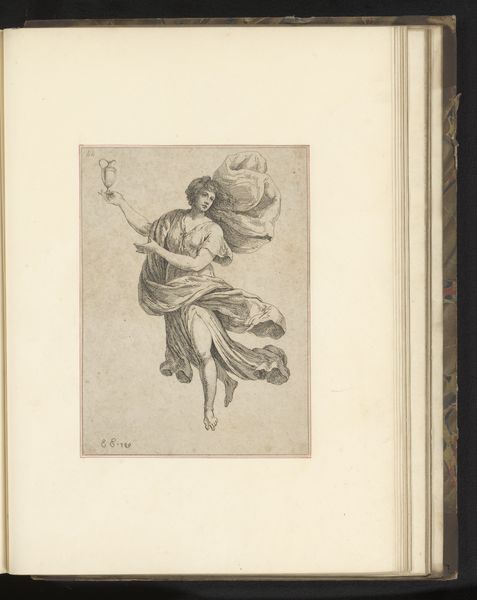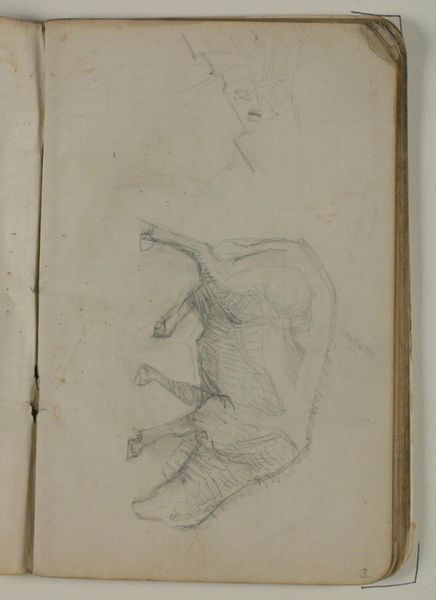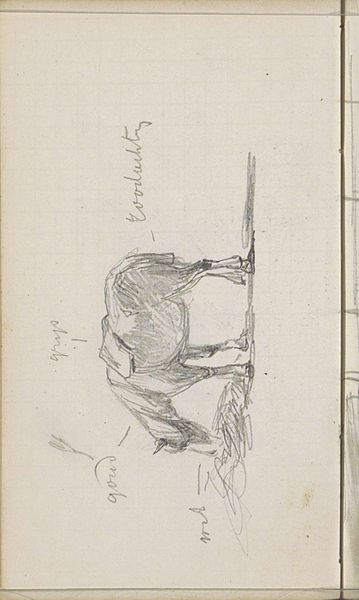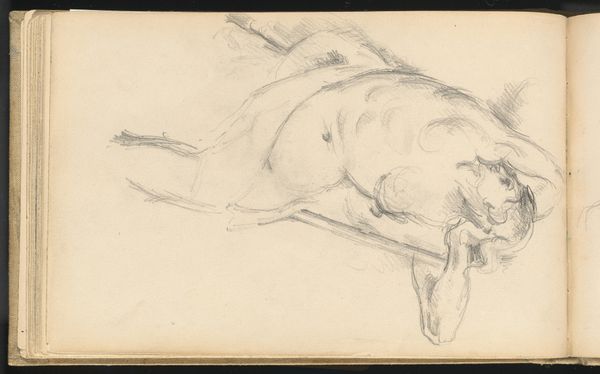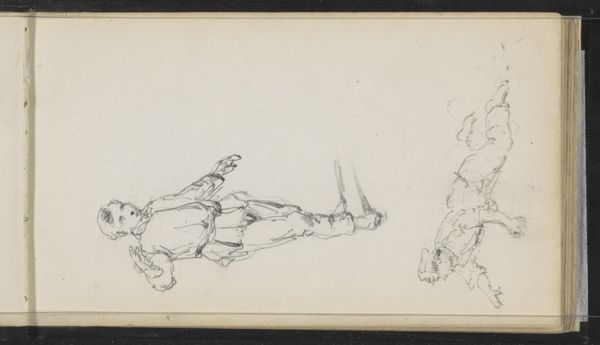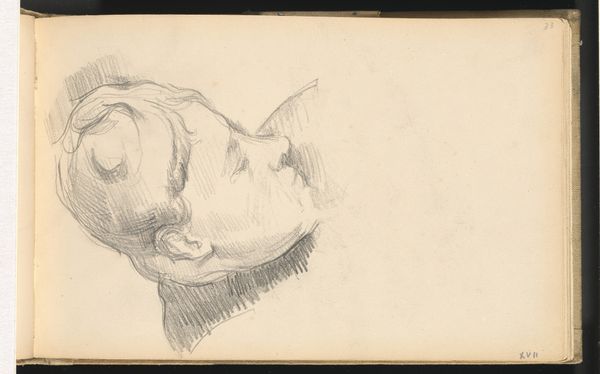
drawing, watercolor, pencil
#
drawing
#
aged paper
#
toned paper
#
light pencil work
#
pencil sketch
#
personal sketchbook
#
watercolor
#
pencil
#
watercolour illustration
#
realism
Dimensions: height 181 mm, width 272 mm
Copyright: Rijks Museum: Open Domain
Curator: Welcome. We’re looking at an image entitled "Indische neushoorn (Rhinoceros unicornis)", or Indian Rhinoceros, a drawing from somewhere between 1790 and 1814. The artist, currently listed as anonymous, rendered this in pencil and watercolor. Editor: It has a wonderfully aged feel; the toned paper provides a stark contrast with the subject. A tangible realism emerges despite what seems to be the rough style, giving me the sense it was drawn directly in front of the rhino in situ. Curator: Yes, the sketch-like quality reinforces a sense of immediacy and naturalism. Notice how the light pencil work delineates the subtle tonal gradations across the rhino's skin, conveying texture and form with striking efficiency. Editor: Beyond that very convincing texture, I think it also invokes a sense of fragility. For me, rhinos symbolize resilience and ancient power. But here, this formidable animal is captured with what almost looks like tentative, gentle strokes. Was the rhino endangered at the time? Curator: Interestingly, placing the work in the context of late 18th-century zoological illustration provides another frame. These depictions served a vital function documenting new species encountered during colonial expeditions. This image reflects the scientific gaze, observing, classifying, and recording. The simple “Rhinoceros” text running alongside acts as the defining taxonomic key, classifying this as something to know and catalogue. Editor: The format itself is fascinating when we remember it is found inside a sketchbook; a much more private format than public illustrations in academic texts of the era. And its scale must surely denote intimacy? I wonder, if not for academic purposes, then was this to evoke a sense of wonder from its maker? Curator: Certainly a potent idea! If we consider the cultural weight of a rhino at that moment—its foreignness—then even the faintest marks become significant. And, for a culture steeped in symbolism, the single horn suggests so many concepts, from the ideas of unicorn legends to phallic power. The drawing invites meditation on both. Editor: Agreed! On the whole, this piece provides not only visual accuracy, but that emotional nuance is definitely apparent, which brings an awareness of what the rhino signified for its beholder all those years ago. Curator: It serves as a document capturing detail and, possibly, much more besides. It's not only a window into natural history but also into a specific relationship—between observer and observed—at a very specific moment in time.
Comments
No comments
Be the first to comment and join the conversation on the ultimate creative platform.
